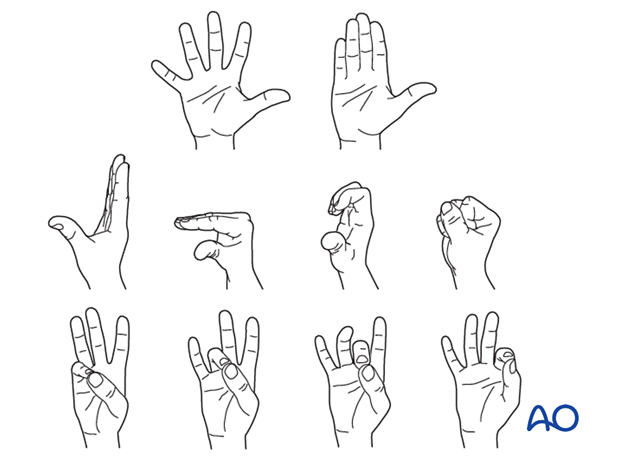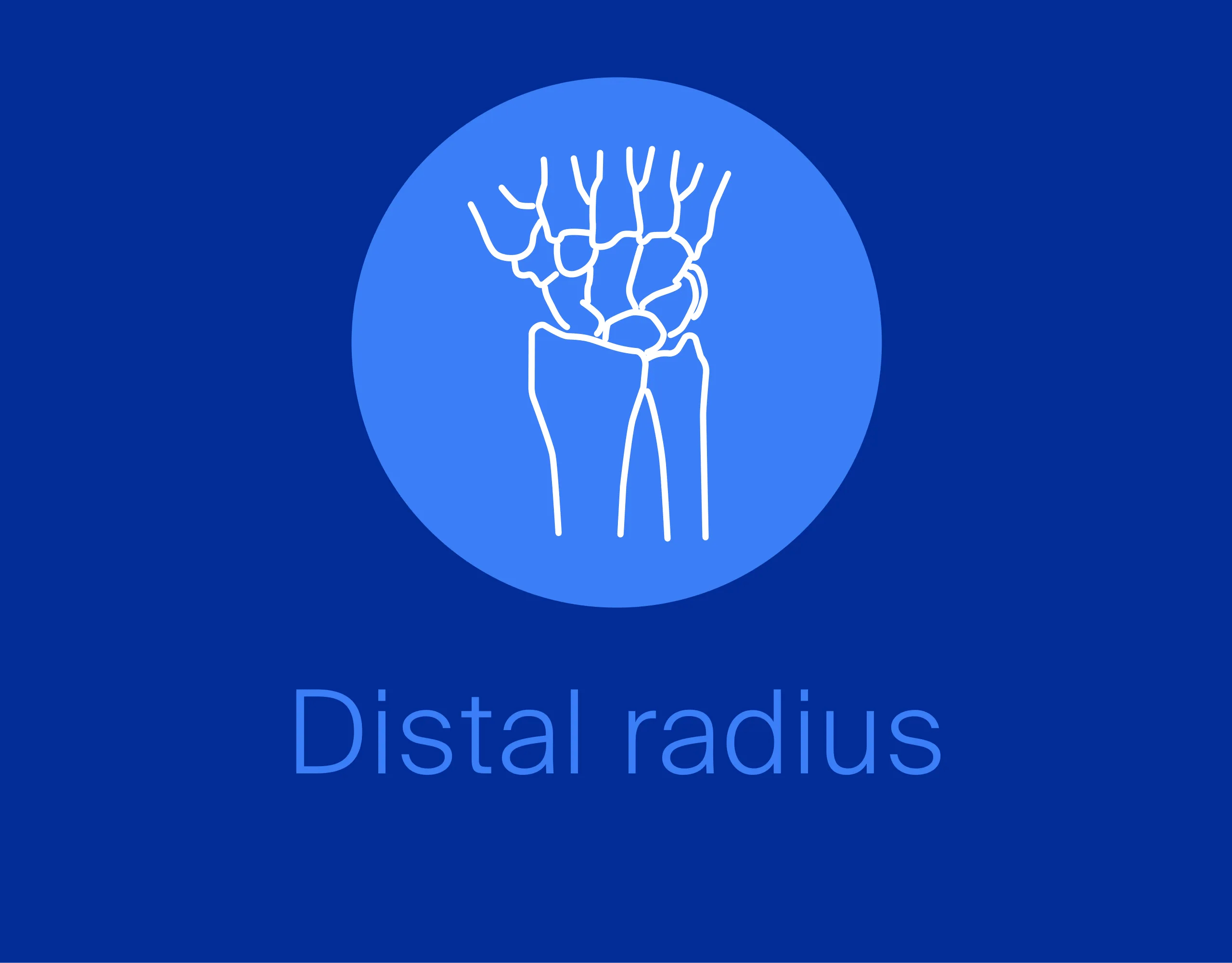Volar plate arthroplasty
1. General considerations
For volar plate arthroplasty, at least 50% of the dorsal articular surface needs to be intact.
The recovery process after such injuries is slow. Advise the patient to expect 8–12 months for full recovery.
Suture anchors or bone tunneling
Two alternative techniques are available for collateral ligament reattachment: suture anchors or bone tunneling.
The advantage of suture anchors is the relative ease of the procedure. It is also a time-saving technique.
Tunneling is the more demanding procedure, but it is significantly less expensive.
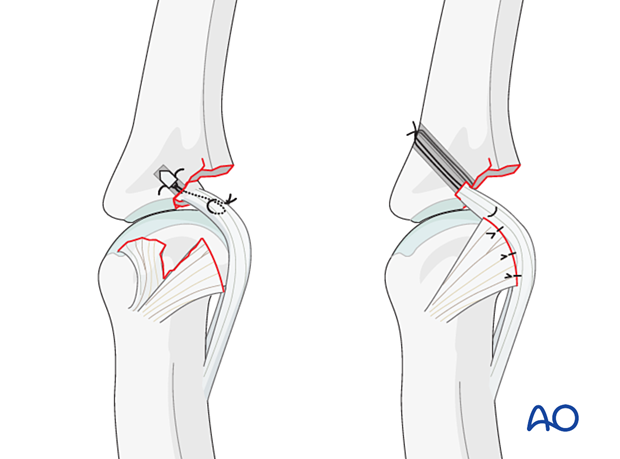
2. Patient preparation
Place the patient supine with the arm on a radiolucent hand table.
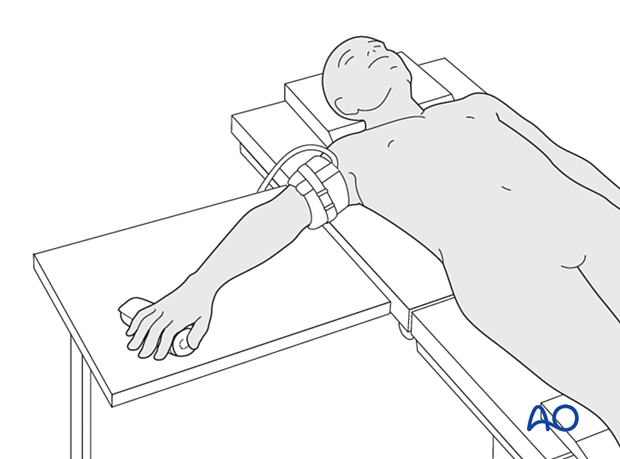
3. Approach
For this procedure, a palmar approach to the PIP joint is normally used.
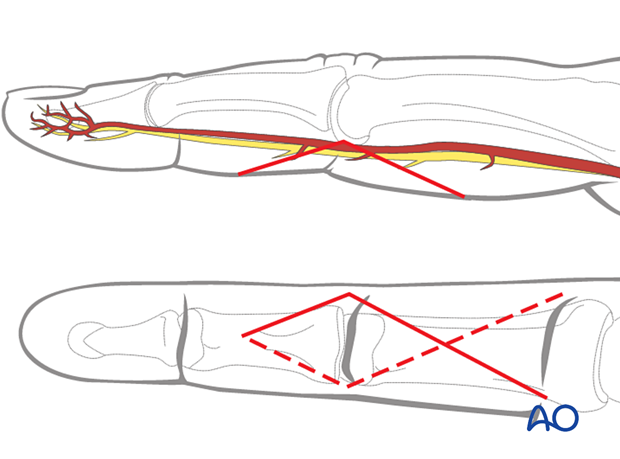
4. Reduction of dislocation
Closed reduction
Dislocation usually presents as an extension displacement with dorsal deformity.
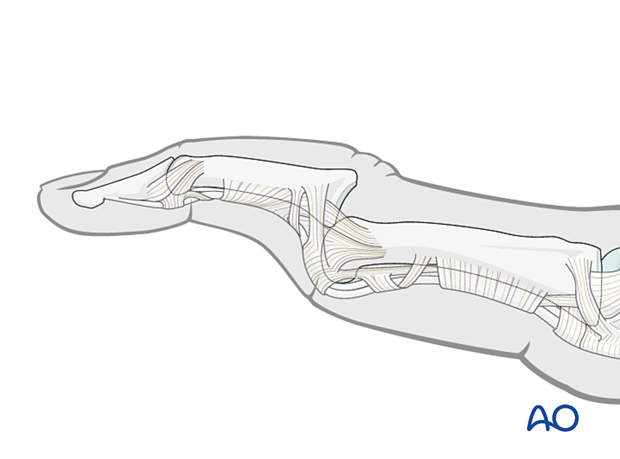
This can be reduced by increasing the deformity with gentle dorsally applied pressure on the middle phalanx to reduce the joint. This keeps the palmar structures in tension and reduced the risk of soft-tissue interposition.
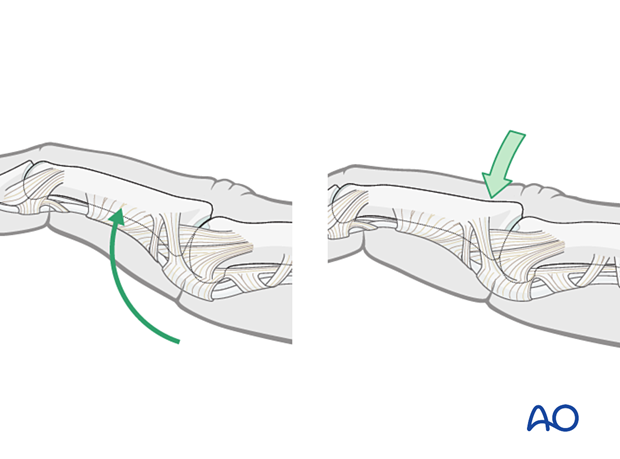
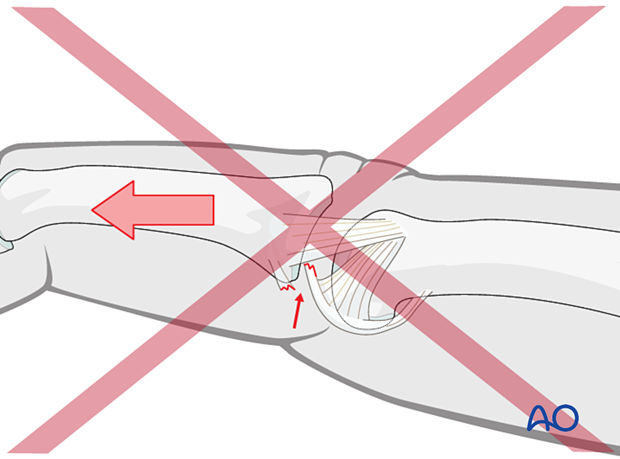
5. Visualizing the joint
Hyperextend the middle phalanx to gain maximal visualization of the joint.
Often the presence of comminution is not apparent from the x-rays and can only be determined under direct vision.
Remove all loose bony fragments to prevent obstruction of joint movement.
Fragments remaining attached to the ligament should be maintained.
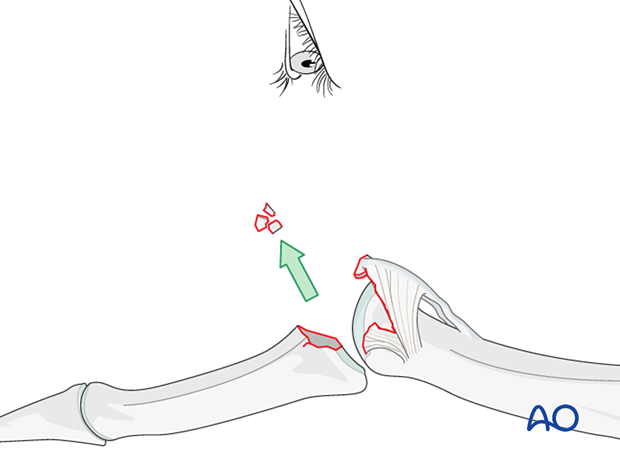
Incision of accessory collateral ligament
Incise the interval between the volar plate and the accessory collateral ligament.
This will allow mobilization (advancement) of the volar plate.
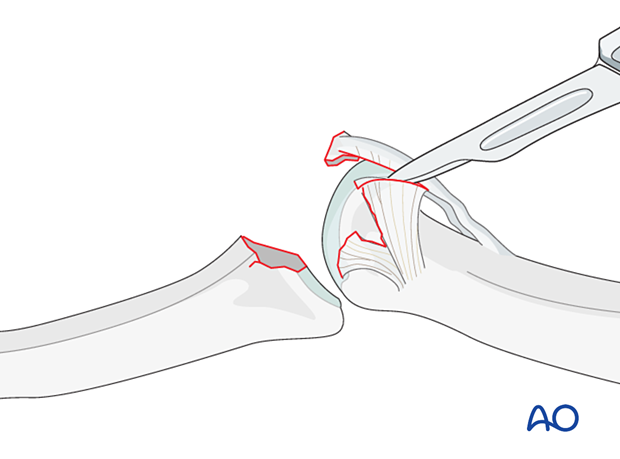
6. Option 1 – Suture anchor fixation
Use two anchors to gain symmetrical traction on the volar plate.
Choose anchors corresponding to the breadth of the fracture. If the anchors are too small, reduction will be compromised by the sutures interposing.
Drilling an anchor hole
Keep the PIP hyperextended to visualize maximally the area of the fracture at the base of the phalanx.
Use the appropriate drill to prepare pilot holes for the anchors.
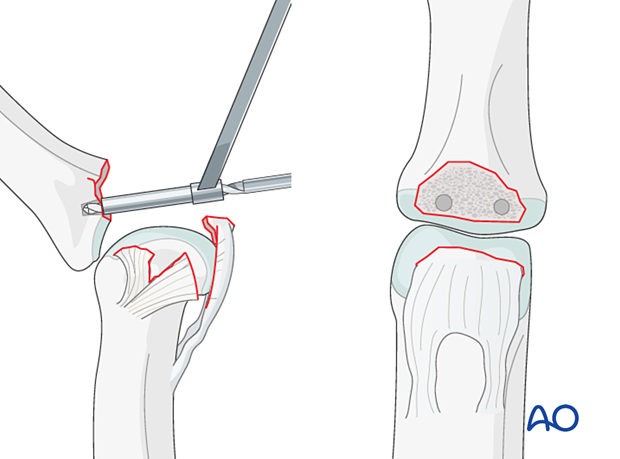
Insertion of the anchor
Insert the anchors with appropriate size according to the manufacturer’s instructions, as close as possible to the subchondral bone.

Insertion of sutures
Insert the sutures into the free end of the volar plate.
Reapproximate the ligament to the phalanx and make a loop in each end of the thread as an anchoring pass. Tie a knot to secure the volar plate to the phalanx.
Reattaching the volar plate close to the subchondral bone will ensure a smooth surface for ideal mobility.

7. Option 2 – Bone tunneling
Making a transverse groove
Shape a transverse groove in the subchondral bone at the base of the middle phalanx with a fine rongeur.
The groove must be perpendicular to the long axis of the middle phalanx to avoid lateral angulation.
This groove will later be used to reattach the distal edge of the volar plate.

Criss-cross suture in the volar plate
Use fine braided sutures with double-mounted straight needles to insert a crisscross stitch (Bunnell) in each side of the volar plate on both sides from distal to proximal and back.

Drilling
Keeping the phalanx hyperextended, drill holes for the needles in the ulnar and radial ends of the transverse groove. It is essential to use a drill guide to protect the cartilage of the condyles.
The drill holes must just perforate the dorsal cortex of the middle phalanx.
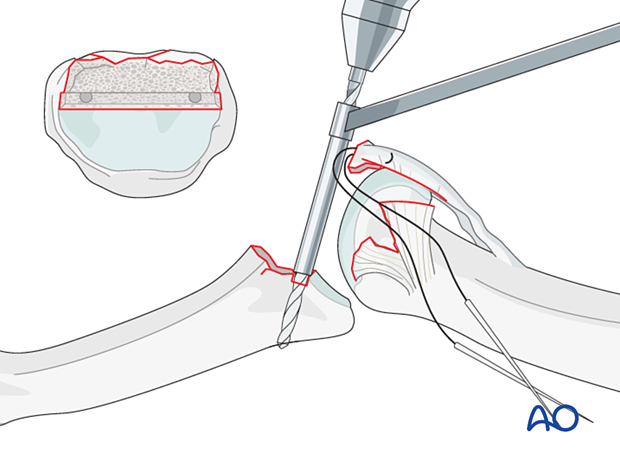
Remember that the drill holes must be positioned as close to the articular cartilage as possible to prevent later subluxation.
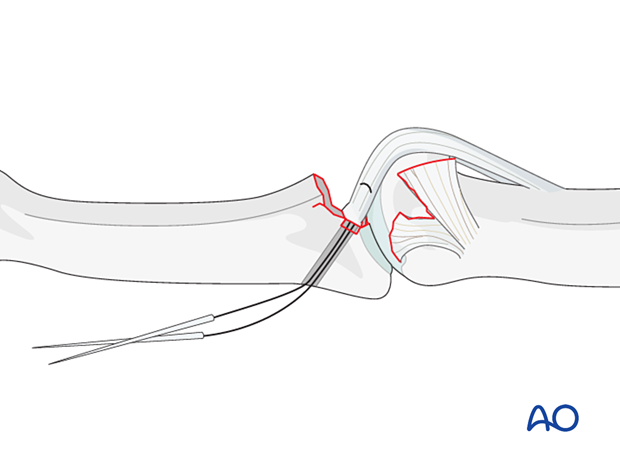
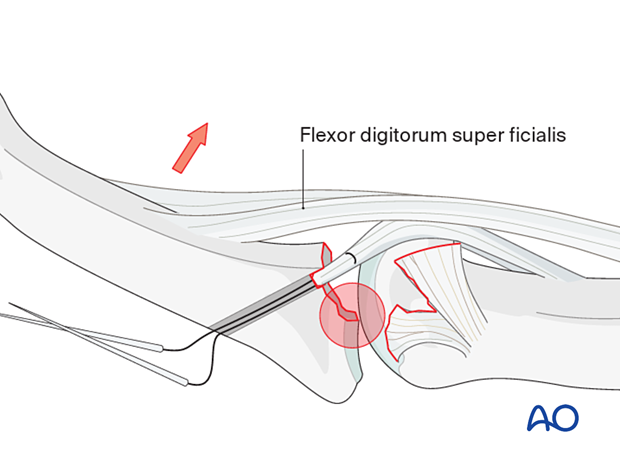
Dorsal incision
Make a dorsal incision of about 1 cm, distal to the insertion of the central slip, incising the triangular ligament.
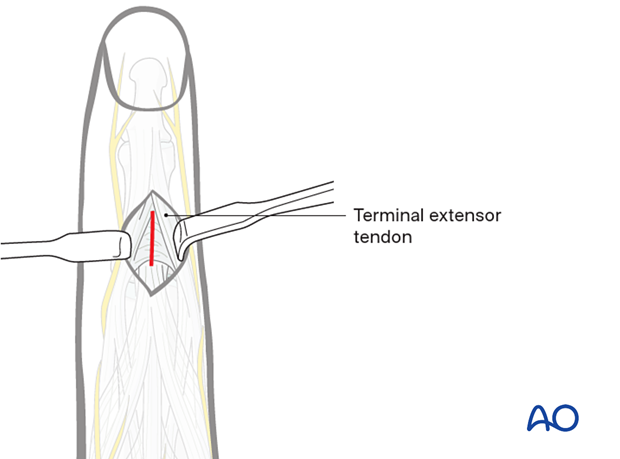
Insertion of needles
Thread the needles through the holes so that they exit through the dorsal incision.
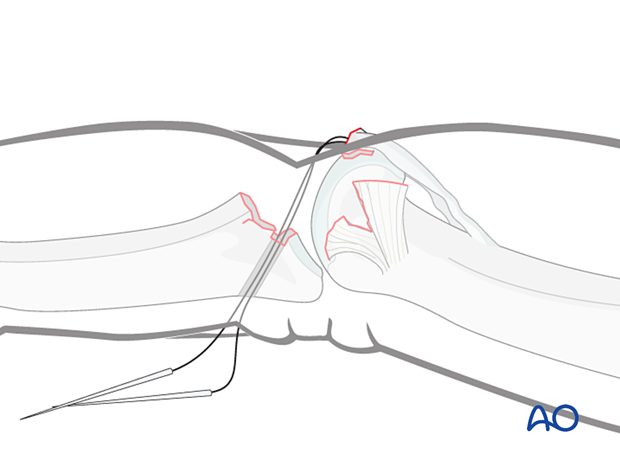
Alternative threading technique
If straight needles are not available, insert fine wire loops from the dorsal aspect through the drill holes. Cut off the curved needles and pass the suture threads through these wire loops on both sides. Pull the wire loops out dorsally, thereby drawing the suture threads through the holes.
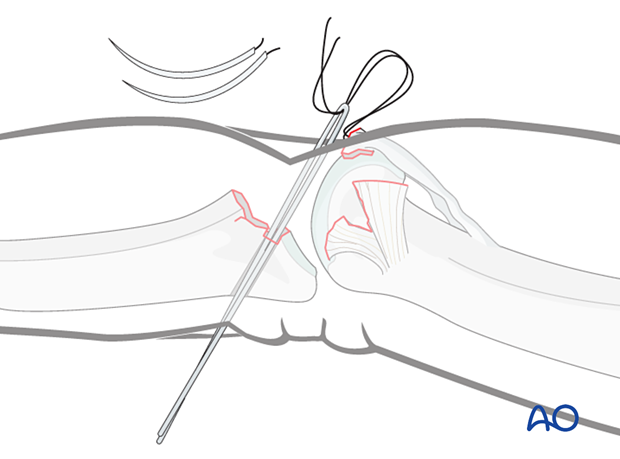
Securing volar plate to the groove
Traction on the four suture threads will draw the volar plate securely into the groove.
Confirm that the volar plate has entered the prepared groove.
Confirm reduction and joint congruency using image intensification.
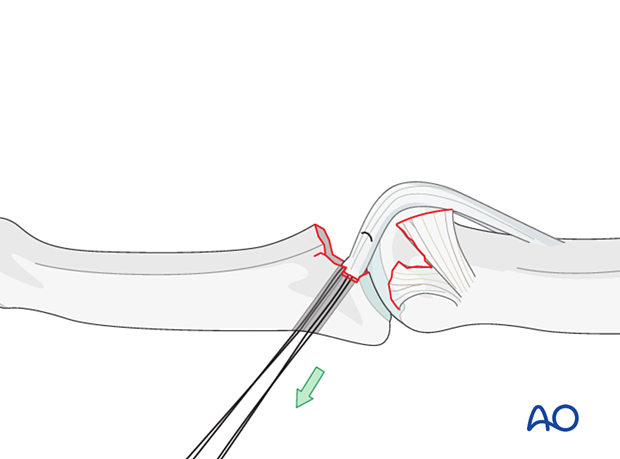
Tightening the sutures
After confirming that the volar plate is not too short, and that fixed flexion does not exceed 30°, tighten the sutures over the dorsal cortex of the middle phalanx.
Resuture the triangular ligament, if possible.
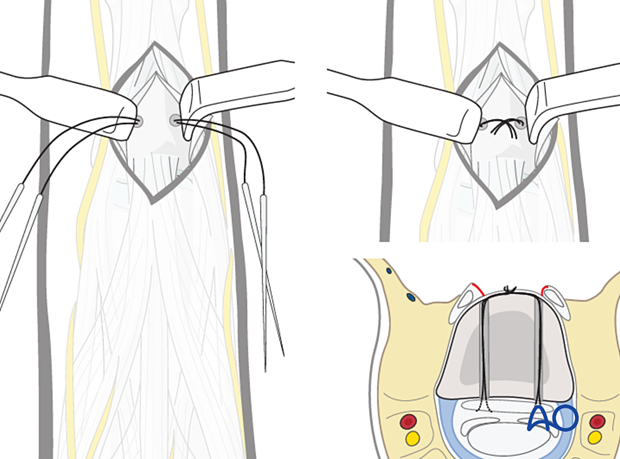
Shortened volar plate
If treatment is delayed, the volar plate is often shortened and can not reach the groove. In such a case, the checkreins need to be mobilized, as illustrated.
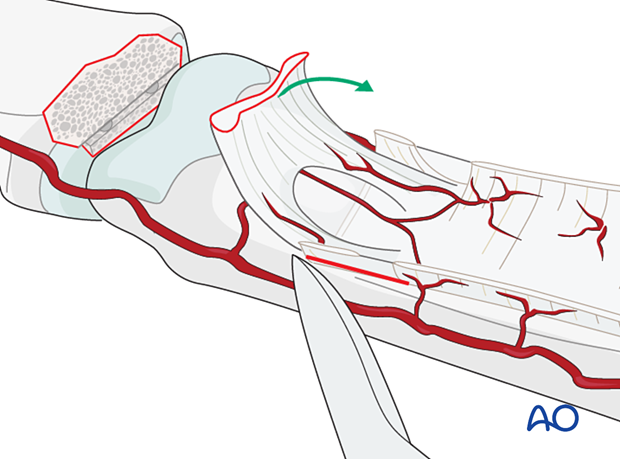
Pitfall: risk of flexion contracture
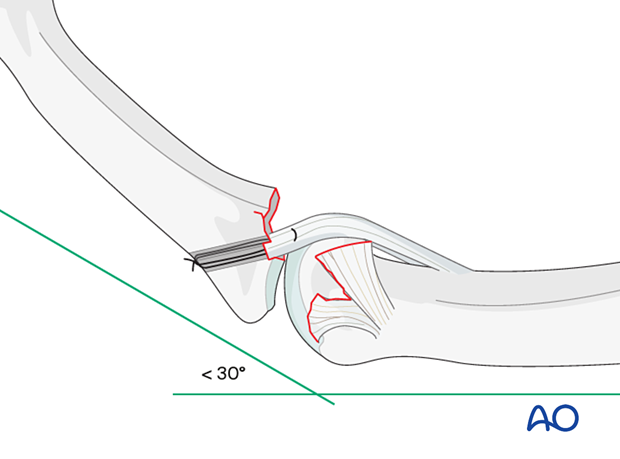
Pitfall: pull-out suture with button
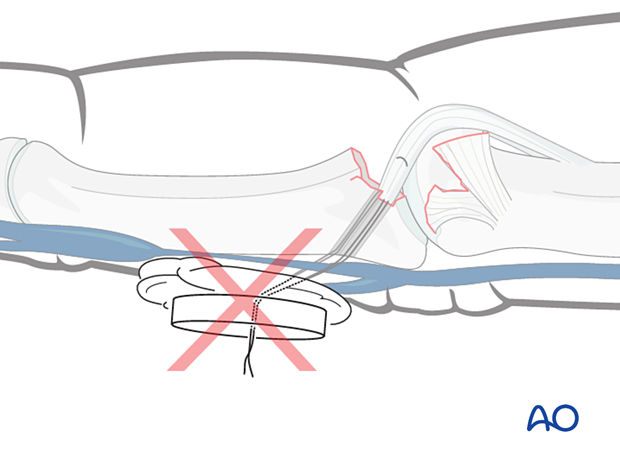
8. Resuturing the accessory collateral ligament
If there is lateral instability, resuturing of the accessory collateral ligament to the volar plate is recommended.
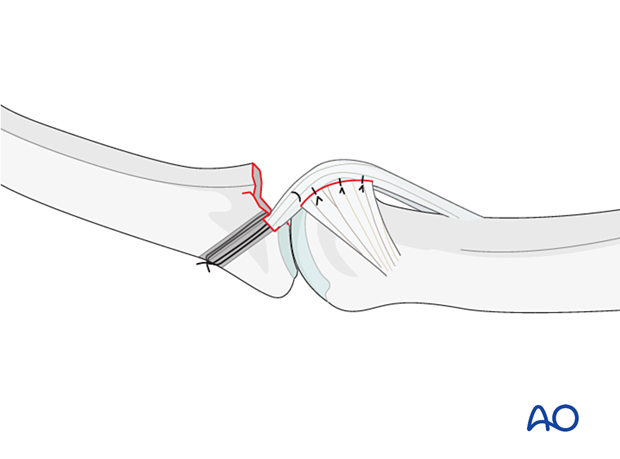
9. Maintaining joint congruency
Extension block K-wire
The extension block K-wire prevents dorsal subluxation and allows for immediate mobilization of the PIP joint.
Insert a K-wire between the condyles of the proximal phalanx, to block the last 20°–30° of extension but allowing full flexion.
This K-wire should be removed after 3–4 weeks.
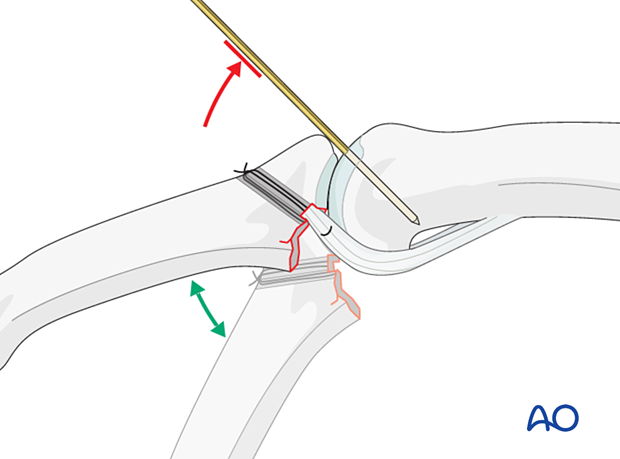
Transfixation of the PIP joint
In case of any joint instability, insert a K-wire across the PIP joint obliquely, with the finger in 20°–30° of flexion to protect the ligament reattachment.
Leave the end of the K-wire outside of the skin to facilitate later removal.
The K-wire can be removed after 4 weeks.
The fixation must be protected with a splint to reduce the risk of wire breakage.
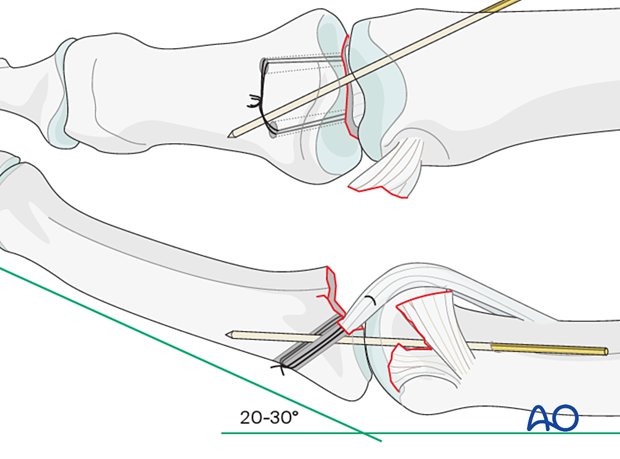
10. Final assessment
Check the stability of the fixation by extending the PIP joint.
11. Aftercare
Postoperative phases
The aftercare can be divided into four phases of healing:
- Inflammatory phase (week 1–3)
- Early repair phase (week 4–6)
- Late repair and early tissue remodeling phase (week 7–12)
- Remodeling and reintegration phase (week 13 onwards)
Full details on each phase can be found here.
Postoperatively
The hand is supported with a dorsal splint for 4 weeks. This should permit movement of the unaffected fingers. The arm should be actively elevated to help reduce the swelling.
The hand should be immobilized in an intrinsic plus (Edinburgh) position:
- Neutral wrist position or up to 15° extension
- MCP joint in 90° flexion
- PIP joint in extension

The MCP joint is splinted in flexion to maintain its collateral ligaments at maximal length to avoid contractures.
The PIP joint is splinted in extension to maintain the length of the volar plate.

Follow-up
When a K-wire has been used, it is removed after 4 weeks. X-rays are taken to confirm articular congruency. Unlimited flexion is encouraged after wire removal.
In the middle phalanx, the fracture line can be visible in the x-ray for up to 6 months. Clinical evaluation (level of pain) is the most important indicator of fracture healing and consolidation.
Active flexion of the PIP joint is initiated by using a dorsal extension block splint at 30°. This will need to be delayed until any K-wire has been removed.
After 4 weeks, the splint is removed, and unrestricted active extension is permitted.
If active extension is still restricted after 5 weeks, then dynamic extension splinting is recommended.
Mobilization
During the whole process, after removal of any K-wire, the hand therapist should closely monitor the rehabilitation.
DIP and MCP joint movement is encouraged immediately to avoid extensor tendon adhesion and joint stiffness. If there is no transfixation of the PIP joint, active flexion of the PIP joint is initiated immediately postoperatively.
Active mobilization is initiated after splint removal. Functional exercises are recommended.
Sporting activities are allowed only after 3 months, and buddy strapping is recommended.
